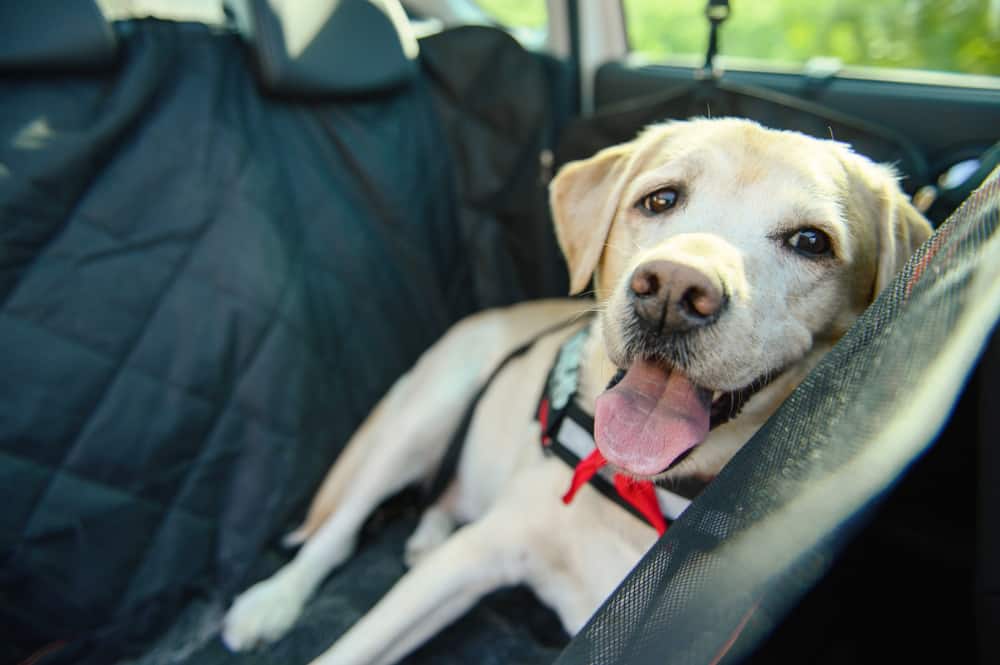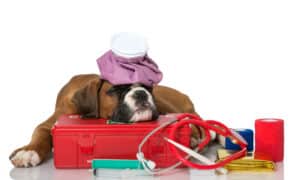“This post contains affiliate links, and I will be compensated if you make a purchase after clicking on my links.”
With the spate of natural disasters on the rise, many families that live in disaster-prone areas already have some sort of plan for protecting themselves during an emergency, whether it’s a hurricane, tornado, or a forest fire. Usually, our furry four-legged friends are left out of the planning picture until it’s too late. They have special needs, so the provisions made for humans cannot automatically extend to dogs.
If you follow the steps shared in this article, you’ll be able to put together a comprehensive plan that takes care of your dog in the case of emergencies.

- Pack a Dog Emergency Kit
Having an emergency kit is essential, whether you’re stuck at home or moving to a safer location, having a dog emergency kit cannot be compromised. You shouldn’t just have one, but it should be fully stocked with all the essential items. According to the British Columbia Society for Prevention of Cruelty to Animals (BC SPCA), one of the largest and oldest animal protection organizations in Canada, has provided details about what a standard pet emergency kit should contain:
- A blanket
- A copy of your dog’s current vaccination history
- A leash and harness
- Any special medication and its accompanying instructions
- A pet first aid kit
- A reliable crate
- A seven-day supply of food and water
- Plastic bags
- Your dog’s identification tag and collar
- Practice an Emergency Routine
The nature of an emergency is that it catches us by surprise. The best way to react quickly is to have a routine in place, not just for yourself, but also for your dog. To get your dog and yourself in the right mental frame for emergencies, practice an emergency routine that you can quickly put into action when disaster strikes, according to the CDC. Train your dog to be in its carrier by making it as comfortable as possible. The Pets Evacuation and Transportation Standards Act requires accommodation for pets during an evacuation. Take your dog for rides in vehicles similar to what you would use in an evacuation.
Practice catching your dog. Make sure this practice involves everyone in the family. Animals are less capable of dealing with stressful situations like humans. Practise routines help your dog stay calm during emergencies and follow your guidance like any random dog day.
- Install a Rescue Alert Sticker
Before disaster strikes, put a rescue alert sticker on your front door or anywhere easily noticeable by outsiders. Doing so will inform rescue workers that there are pets in the house so they can put in place the necessary protocols to evacuate your dog. If you can get out safely, either by yourself or with the help of rescue workers, ensure to cross out the sticker and put ‘evacuated’ or any message that makes it clear that there is no pet in the house anymore.
- Install a Microchip
You could do all the above and nothing would come out of it disaster struck in a way that separated you from your family and dog. For extreme situations like this, a microchip is a good fallback option. A study of pets in shelters found that those with microchips had a higher rate of return to their original families, compared to those without. With a quick shot, you can get a microchip under your dog’s skin and register it online for $20.
If your dog ever goes missing after an emergency, the chip will be scanned and the vet or shelter will be able to contact you.
When things get shaky, your dog looks up to you to keep it safe and protected. Whether it’s a natural disaster or pandemic, putting in the right steps for your dog’s safety can mean the difference between a silver lining or a near-death experience.























